Menu
Free Consultation
Today, tooth loss due to various reasons can lead to aesthetic and functional problems. It can also negatively affect the quality of life of the individual. Missing one or more teeth can undermine an individual's confidence and make daily life activities difficult. Although there are many different dental procedures that can be applied to solve these problems, the All-on-six implant system can be defined as a modern implant treatment method that offers an effective solution, especially in cases of complete edentulism.
In the All on 6 implant method, six implants on the upper jaw or lower jaw are fixed on a special single prosthesis. In this way, it is possible to obtain a fixed, strong and natural tooth structure with only six implants in the jaw where the patient has suffered complete tooth loss. The name All on 6 refers to the six implants used during the treatment.
The All on 6 implant or six implant technique is a practical and comfortable method that is completed in a single stage and provides fast results. Since it is applied more easily than standard implant techniques, it provides both patient comfort and a permanent solution to prevent dental diseases. However, the decision to apply all-on-six implant treatment is made on a patient-specific basis after the evaluations made. Because all on 6 implant treatment is not suitable for every patient.
Before deciding on the suitability of all-on-six implant treatment, it should be evaluated whether the patient's general health status constitutes an obstacle to treatment. At the same time, the patient's oral and dental health, jaw structure and edentulousness are examined. Dental x-rays are also taken. After the evaluations, if the patient is found suitable for all on 6 treatment, the planning stage begins.
Within the scope of All on 6 treatment, 6 implants are placed in the front part of the upper and lower jaw at an angle of 90 degrees and in the back part at an angle of 45 degrees. After the titanium screws are inserted into the jawbone, lightweight temporary prostheses made of resin are attached. A period of 3 months is usually required for the titanium screws to fuse with the temporary prosthesis. After the healing process is complete, permanent prostheses are placed.
In patients undergoing All on 6 treatment, bruising may occur in the application area with the placement of titanium screws in the jawbone. These bruises usually disappear in a short period of time. The dentist may impose some restrictions on eating and drinking during this process. It is important to follow these restrictions for a fast and healthy healing process.

The loss of teeth in the mouth for various reasons can negatively affect the quality of life. Today, all on 6 implant treatment stands out as a functional solution that provides an aesthetically satisfying appearance in case of complete edentulism.
All-on-six treatment is applied to quickly solve the problem of toothlessness that negatively affects the quality of life of individuals. With the use of six implants, it may be possible to realize fixed prosthesis application in a single session. Thus, the patient achieves an aesthetic and functional solution in a short time.
Within the scope of All on 6 implant treatment, six titanium screws are used to fix the prosthesis. Thus, the prosthesis provides a similar appearance and comfort to natural teeth. Achieving an aesthetically satisfying smile also helps to increase the patient's self-confidence.
The use of six implants within the scope of this common dental procedure ensures a balanced load distribution on the jawbone. This prevents loss of the jawbone over time and preserves the bone structure. In other words, the risk of bone loss is reduced compared to traditional denture methods.
The All on 6 implant treatment is based on a strong structure consisting of six solid titanium screws. This increases the durability of the prosthesis and enables the patient to perform chewing functions safely.
The aesthetic and functional advantages obtained with All on 6 implant treatment also contribute to the improvement of the patient's quality of life. People who have a natural smile increase their self-confidence in social relations and perform their daily life activities more easily.
All on 6 treatment is an effective dental procedure based on the placement of a fixed bit denture on the jaw through the use of six titanium screws. The application stages of the All on 6 treatment are generally as follows:
The all-on-six treatment process begins with an evaluation by a dentist who is specialized and experienced in this field. In this context, the patient's general health status, the setup of existing teeth, jaw structure and bone density are evaluated. Imaging methods such as X-rays and computed tomography are used to plan the correct positioning of the implants.
The first step of the All on 6 treatment is the surgical procedure. The dentist places the titanium implants into the jawbone through a surgical procedure. Since this process is usually performed under local anesthesia, the patient does not feel any pain. The integration of the titanium implants into the jawbone provides a strong foundation for the dentures.
After the implants are placed in the jawbone, prostheses designed temporarily for the patient are inserted. Thus, patients can continue their daily activities comfortably until the implants integrate with the jawbone. In addition, the patient's smile and chewing functions gradually improve.
After the implant is integrated with the jawbone and the jawbone is ready, a permanent prosthesis design is made. An aesthetic smile can be achieved by making permanent prostheses designed in accordance with the patient's oral structure resemble natural teeth in terms of color, shape and size.
Once the implants are ready, the permanent dentures are placed and the denture is fixed on the implants. In this way, a strong connection is provided and all on 6 implant treatment is completed by creating a solid structure.
It is possible to achieve successful results if the all-on-six implant technique is applied to the right patients with the right techniques by dentists who are experts and experienced in their field.
All on 6 implant treatment is a more cost-effective dental procedure in general.
It is a practical treatment process that is completed in a short time.
Thanks to All on 6 implant treatment, patients with advanced bone loss do not need sinus lifting or grafting treatment.
All on 6 implants that do not need to be removed are more robust than permanent dentures.
It is possible to bite as comfortably as with natural teeth.
All on 6 implants can be used for a long time if oral and dental health is taken care of.
All on 6 implant dental treatment is a preferred dental procedure for patients with complete edentulism in the upper and lower jaws. In addition, it can also be applied to treat regional edentulism by reducing the number of artificial tooth roots.
All on 6 treatment;
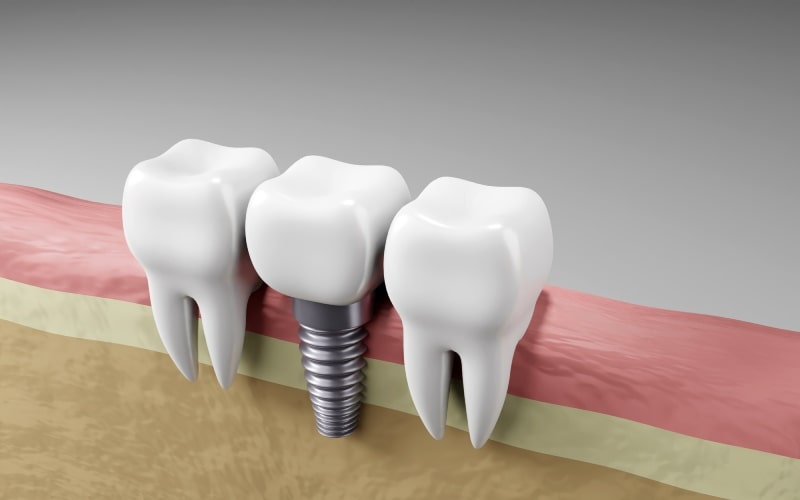
After all-on-six implant treatment, there are some important factors to be considered for a successful recovery and long-term results.
All on 6 prices vary depending on a number of factors. These factors include the price policy of the clinic, the quality of the material used, additional procedures needed during the treatment process, the design of the prosthesis and the general health status of the patient. Since All on 6 treatment is planned individually for each patient, there is no standard price.
Oral and dental health is one of the most important factors determining the quality of life of individuals. As a result, treatments aimed at eliminating tooth deficiencies or deficiencies that occur due to various reasons are becoming increasingly important. Implant treatment; It is frequently applied to replace teeth lost for various reasons, as well as to eliminate the problems experienced by the patient in chewing, taste, speech and appearance.
However, in patients who have no teeth or who are likely to become completely toothless in the near future, implant treatment becomes a much more time-consuming and costly treatment. All on 4 treatment, on the other hand, stands out as an extremely fast and effective dental procedure that eliminates the need for advanced surgery due to sinus lift, bone augmentation or bone insufficiency in patients with no teeth.
All on 4 implants is an implant treatment protocol designed for individuals who are edentulous or have suffered tooth loss. With this method, an upper or lower jaw can be completely restored using only four implants. Unlike other traditional implant techniques, the all on 4 implant provides maximum stability and durability using fewer implants. This shortens the treatment process and provides a more comfortable experience for the patient.
One of the most important features of the All on 4 implant technique is that it allows tooth prosthesis to be fixed on 4 dental implants placed at certain angles on the same day in edentulous patients. Within the scope of all on 4 implant treatment specially developed for individuals who experience various problems due to lack of teeth; 2 implants are placed at an angle of 30 to 45 degrees in the back of the jaw. The other 2 implants are positioned perpendicular to the front area.
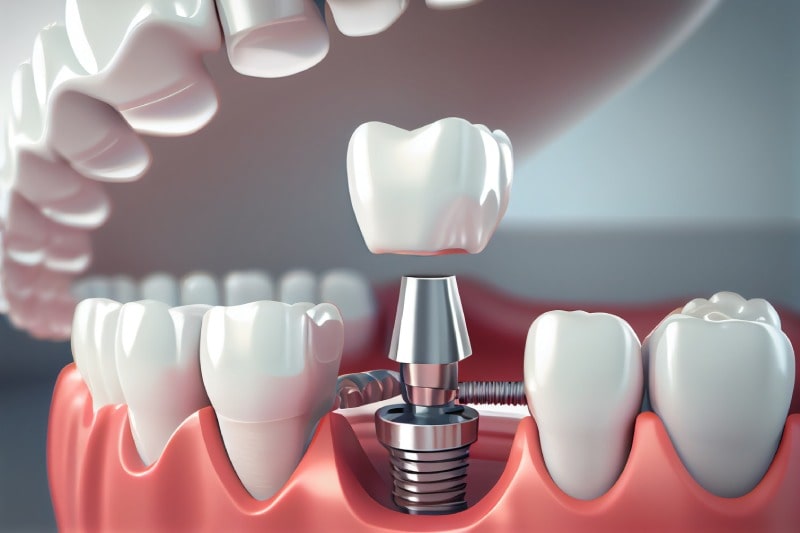
All on 4 implant treatment is an extremely comfortable, practical and effective dental procedure. In order for the treatment to be successful, it is extremely important that it is planned on a patient-specific basis and applied by experienced and specialized dentists.
The first step of all on four implant treatment is to evaluate the patient's oral structure. X-rays and other imaging methods can be used for this. The patient's jawbone is examined using different methods. A detailed planning is then carried out to find the right location for the implants.
After planning, the surgical procedure begins. Four implants are placed at the determined points of the jawbone through the surgical procedure. At this stage, care must be taken to place the implants in a position that will fuse correctly with the jawbone.
After 4 implants are placed in the patient's jawbone, a temporary dental prosthesis is attached. This prevents the patient from being toothless until the healing process and treatment is completed.
The surgically placed implants need about 3 months to fuse with the jawbone. It is very important for the patient to follow the dentist's recommendations for a healthy and fast healing process.
After the implants are fused with the jawbone, permanent dentures are prepared and the prepared dentures are fixed to the implants. The most important feature of these dentures is that they look like the patient's natural teeth and are a functional solution.
Tooth loss due to various reasons is not only an aesthetic problem, it can negatively affect the quality of daily life. However, thanks to today's technological advances in dental implants, All on 4 treatment effectively solves the problem of toothlessness and offers a number of advantages to patients.
All on 4 implant treatment is a fast and effective dental procedure that can be completed on the same day. Compared to traditional implant treatments, the treatment process is shorter as fewer implants can be used to fill a larger area of missing teeth. After the implants are placed, the patient can be immediately fitted with dentures, so patients can ensure their comfort in daily life.
Since All on 4 treatment is applied using dental implants, the results obtained are very similar to natural teeth. The teeth, which are individually designed in terms of color, shape and size, give the patient's smile a natural and aesthetic appearance. In addition, since the implants are tightly integrated into the jawbone, patients can perform their daily activities comfortably.
Four implants are strategically placed as part of the treatment, ensuring maximum strength and stability on the jaw. This allows patients to consume a variety of foods without any problems and achieve an aesthetic smile.
Traditional implant treatments usually require a larger number of implants. Accordingly, the cost of the treatment is also higher. All on 4 treatment, on the other hand, offers an economical option due to the use of fewer implants within the procedure. Thus, it becomes an attractive alternative for individuals who want to solve the problem of toothlessness but have budgetary concerns.
The short recovery period of All on 4 treatment allows patients to return to their normal lives quickly. This can be a significant advantage for individuals seeking a solution to dental problems that affect their work or social life.
Traditional implant treatments may require advanced surgical procedures such as sinus elevation or bone augmentation. The All on 4 method is less invasive and does not require such procedures.
The treatment process begins with a detailed examination and digital imaging study by a specialist dentist. In this context; jawbone structure, tooth deficiency status, general oral health and general health status of the patient are evaluated.
According to the information obtained, patient-specific treatment is planned. For this, the points where the implants will be placed, the shape, color and size of the teeth are determined.
Local anesthesia is applied to the patient and the implants are placed at designated strategic points. Thus, maximum durability and stability can be achieved by utilizing the strongest parts of the jawbone.
After the implants are placed, temporary prostheses are attached and patients can continue their daily activities.
After the healing process is complete, permanent dentures are designed and manufactured in the color, shape and size suitable for natural teeth. They are then fixed to the implants.
The All on 4 implant technique is one of the most important dental procedures of recent years. On the other hand, in order for the treatment to be successful, it must be applied by experienced dentists who are experts in their field, and it must also be planned specifically for the patient. In addition, care should be taken about oral and dental care after treatment.
All on 4 implants offer a quick solution for patients who have lost all their teeth. Implants are placed in the same session and temporary prosthetic teeth can be fixed immediately.
The prosthetic teeth used in the All on 4 implant technique provide a similar appearance to natural teeth. In addition, it does not affect the chewing and speech functions of the patients.
Since the implants are placed in the jawbone, they stimulate bone tissue and prevent bone loss.
Since only 4 implants are used in All on 4 treatment, fewer surgical procedures are required and the healing process is faster.
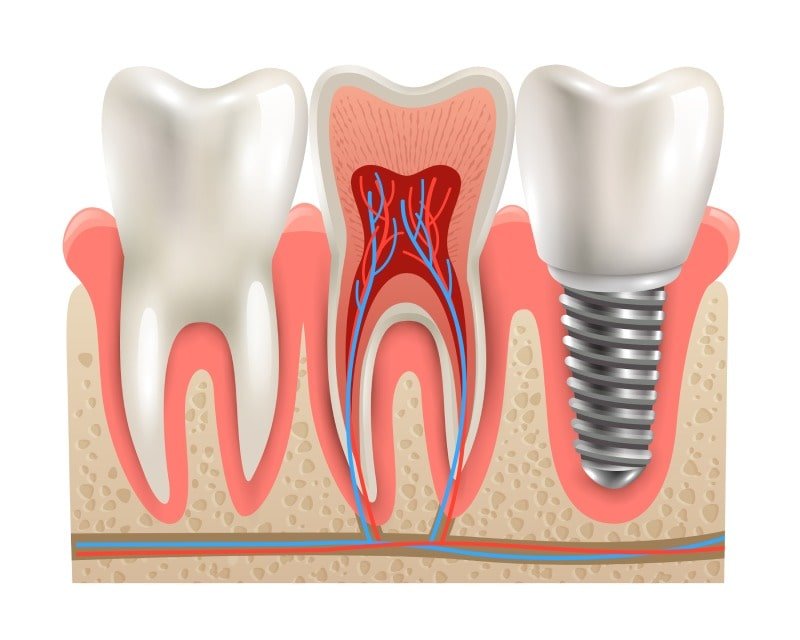
All on 4 treatment is an ideal solution for individuals who are edentulous or have lost teeth. This treatment can be used to solve the problem of toothlessness in both the upper and lower jaw.
Individuals who are not suitable for traditional implant treatments or who have low jawbone density may be suitable candidates for all on 4 treatment.
The general health condition of the patient should not be an obstacle to the application of All on 4 treatment. Since each patient's individual situation, needs and expectations are different, it is important to make a treatment decision by making a patient-specific evaluation.
Some points should be considered in order to have a successful and healthy healing process after All on 4 treatment and at the same time to obtain results that will maintain its thickness for a long time.
Following the dentist's instructions exactly after the operation can help reduce swelling, pain and other possible complications.
Regular dental check-ups to check that the implants have been successfully integrated should not be missed. These check-ups can provide an opportunity to detect and treat potential problems early.
Oral and dental care should not be neglected after treatment. Teeth should be brushed regularly, flossed and antibacterial mouthwash should be used.
In the first few days following treatment, soft foods should be consumed and hot and spicy foods should be avoided.
Smoking and alcohol use should be discontinued as it may adversely affect the healing process.
All on 4 prices may vary depending on the patient, whether it will be applied to one jaw or lower jaw, whether tooth extraction is required, the quality of the implant to be used, the price policy of the clinic that will perform the application and many other factors.
Smile is one of the elements that help both men and women express themselves and reflect their mood, and it is also a part of body language. As a result, people who think that their teeth cause an unaesthetic appearance when smiling often feel obliged to hide their teeth or close their mouths to hide this appearance. As a result, there may be a lack of self-confidence and even various problems in social life. Smile design, as one of the most preferred aesthetic dentistry applications, helps patients achieve an aesthetic, natural and functional smile.
As seen in recent years, smile design has become one of the most popular aesthetic dentistry procedures. In case the teeth and gums lose their aesthetic appearance due to many different reasons, procedures that will restore the most natural and beautiful appearance are applied by evaluating the person's face shape and expectations. Smile design is a multidisciplinary approach that is planned and applied in accordance with the needs, expectations and face shape of each patient. Thanks to the customized and effective results it provides, smile design has an increasing popularity.
Since smile design is planned individually for each patient, patients can have natural and aesthetic looking teeth that are compatible with their facial and jaw structures. With smile design procedures, it is possible to improve the color of the patient's teeth and the health of the gums. Although smile design helps every patient to have a healthy, beautiful and remarkable smile, there are some critical elements that should be considered during smile design for men and women. The most important of these is to aim for more rounded oval-shaped teeth in women, while more rectangular teeth are preferred in men.
Since smile design is a patient-specific aesthetic dentistry procedure, there is no standard for the scope of the procedure and the steps to be applied. In order for the smile design procedure to be successful, it is necessary to analyze the patient's needs and aesthetic expectations correctly. In this direction, it is possible to make a correct planning.
The first step of the treatment plan prepared in accordance with the needs and expectations is to make models by taking the patient's mouth and teeth measurements. The planning step is completed according to the problems to be treated and modeling is used in this process.
In addition, the patient's mouth and face are photographed from various angles. By making measurements using special programs in the computer environment, it can be seen how the result will be in harmony with the patient's facial shape and aesthetic expectations. At this stage, the approximate appearance to be obtained after the treatment is completed should be presented to the patient over the restorations prepared in accordance with the computer programs and mouth measurements, and the applications should be started after the patient's approval is obtained.
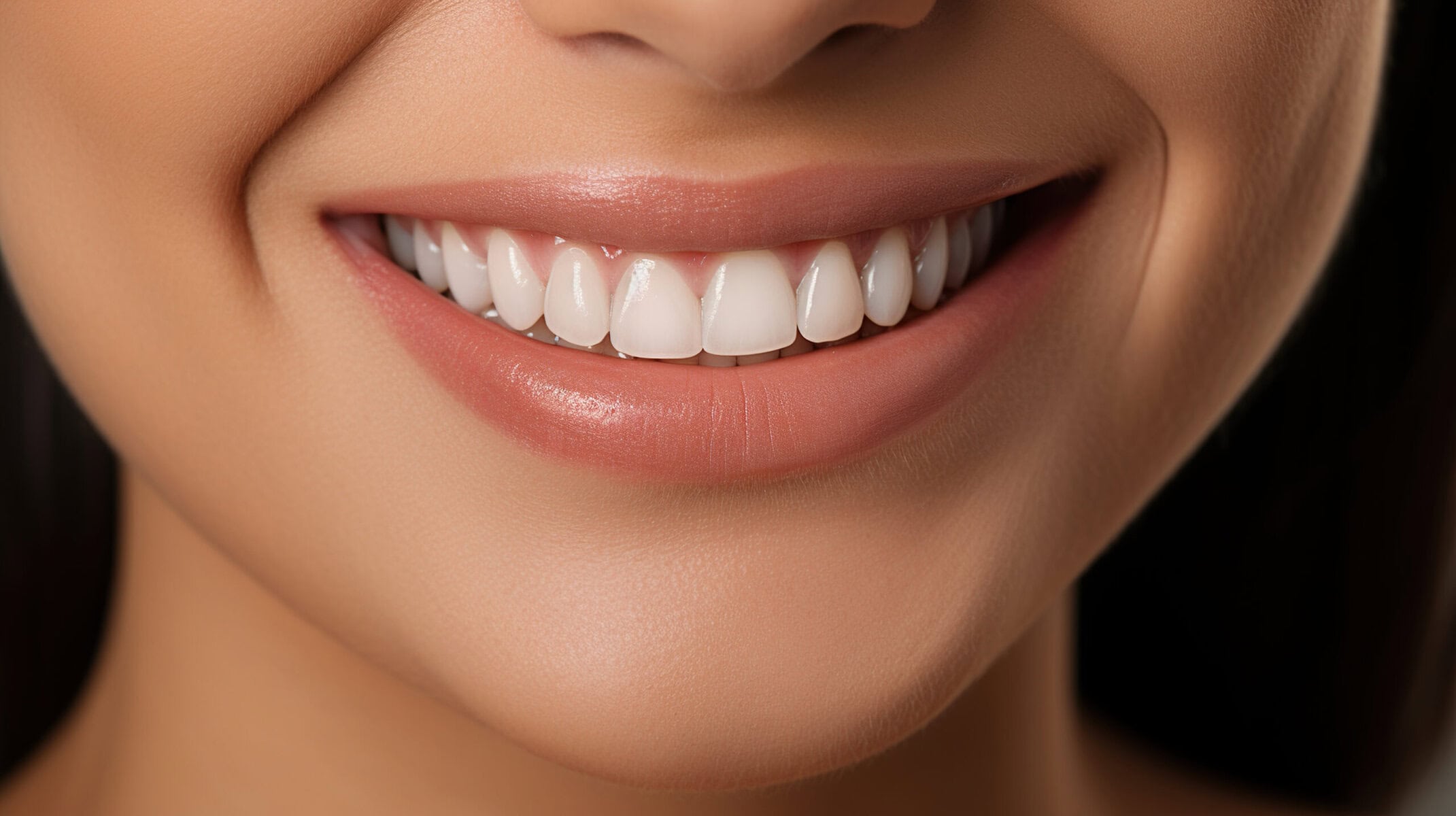
After the smile design treatment is planned, if it is decided that the patient does not need orthodontic treatment, procedures to regulate the level disorders in the gums are started. If the patient has one or more missing teeth, these deficiencies are eliminated using the method determined specifically for the patient. After surgical procedures and dental implant treatment, a certain recovery period is required. In case of need, teeth whitening procedure is applied.
If there are visual and stylistic defects in the patient's teeth, composite filling or laminated or zirconium dental veneer treatment can be applied depending on the current condition of the teeth. In cases where the porcelain laminated tooth coating method will be applied, it may be sufficient to perform very little abrasion on the teeth or no abrasion may be required.
If porcelain or zirconium dental veneer treatment is deemed appropriate for the patient, it is necessary to obtain the patient's consent during the rehearsal. If the patient requests some changes and the dentist confirms that these changes will provide a natural and aesthetic appearance, updates may be made accordingly. Evaluating the shape and contour of the lips during rehearsals and finalizing the targeted design after the evaluations will help to increase the success of dental and gum applications.
In some patients, various medical aesthetic procedures such as dermal filler injection into the lips and face area can be used to improve the results. In this way, optimum benefit can be obtained from smile design applications.
Within the scope of attractive aesthetic smile, also known as sexy smile, the front teeth are designed longer than the others. It is one of the most preferred smile design types. Usually women show interest in sexy smile design.
Intellectual smile design is generally suitable for middle-aged people. Within the scope of intellectual smile design, which allows the person to have a more mature appearance, attention is drawn to the lower part of the patient's face.
In the sporty smile, which is one of the most common designs applied by dentists, the middle incisors are designed to be longer than the side incisors. Which type of smile design will be applied; It is determined after the evaluation made according to the demands of each patient, the existing oral and dental structure and other elements of the face.
Smile design is a comprehensive and customizable treatment process that differs for each patient. The aim of smile design is to change the color, shape and surface structure of the patient's teeth. It may be possible to meet the different aesthetic needs of each patient by determining the procedures to be applied within the scope of treatment on a patient-specific basis. In order to determine the procedures to be applied within the scope of smile design, the patient's gender, age, facial features, needs and expectations are meticulously evaluated.
One of the most important steps before planning smile design treatments is to evaluate the patient's dental and gum health. If any problems are detected, these problems should be treated first. After patient-specific planning, various procedures such as prosthesis and dental implant applications, porcelain laminate, dental veneers, zirconium veneers, professional teeth whitening and orthodontic treatment may be applied to eliminate tooth deficiency or deficiencies.

In addition to improving the appearance of your teeth, smile design has a positive effect on your overall facial expression, allowing you to have a more attractive, more vibrant and more aesthetic smile. In this way, in addition to improving your aesthetic appearance, it also reinforces your self-confidence. You can have a smile design by applying to an expert and experienced dentist to have a more aesthetic smile that is compatible with your facial features and at the same time to avoid having to close your mouth while laughing or talking.
Smile design is a comprehensive process consisting of various procedures to improve the aesthetics of teeth and gums and oral health. In this context, the smile design procedure has a number of advantages:
Since smile design is a customizable procedure, it should be taken into consideration that the scope of the procedures and the advantages to be provided may vary individually.
The duration of the smile design may vary depending on the procedures to be applied for each patient. Since the procedures to be applied within the scope of smile design vary depending on the current condition of the patient's teeth and gums, structural features, needs and expectations, the time to complete the smile design may also vary. Therefore, how long it will take to complete the smile design will be determined after the patient is examined in detail and the procedures to be applied are planned.
The appearance of the mouth area and the smile are very important in terms of the first impression that a person creates in daily life. For this reason, it plays an extremely important role both in human relations and in having an aesthetic appearance. Hollywood smile, also called smile design, is frequently preferred by women and men of different age groups who want to have a more aesthetic smile. The main purpose of the Hollywood smile procedure is to achieve a harmony between the teeth and gums that will provide an aesthetic appearance.
It is a fact that having a more beautiful smile and a more aesthetic appearance positively affects one's self-confidence. In this context, Hollywood smile is a procedure that can be customized with plans suitable for the needs, expectations and other elements of each patient's face. Thanks to patient-specific planning, an aesthetically satisfying and natural appearance can be achieved. For this reason, Hollywood smile ranks first among the most applied aesthetic dentistry procedures, especially with its increasing popularity in recent years.
Before the Hollywood smile procedure is performed, the patient is examined, their needs are determined and their expectations are learned. It is evaluated whether the expectations are compatible with a natural and aesthetically satisfying appearance. After the analysis process, the treatments to be applied to achieve a natural and aesthetic appearance are determined specifically for the patient.
Diş muayenesi sırasında diş veya diş eti sorunları tespit edilirse, ilk adım bu sorunları gidermek için tedaviler uygulamaktır. Dişler ve diş etleri sağlıklıysa, ağız içi ölçüler alınır ve modelleme yapılır. Hastanın fotoğrafları ve çeşitli bilgisayar programları kullanılarak yüz şekline uygun bir planlama yapılır ve hangi tedavilerin uygulanacağı belirlenir.
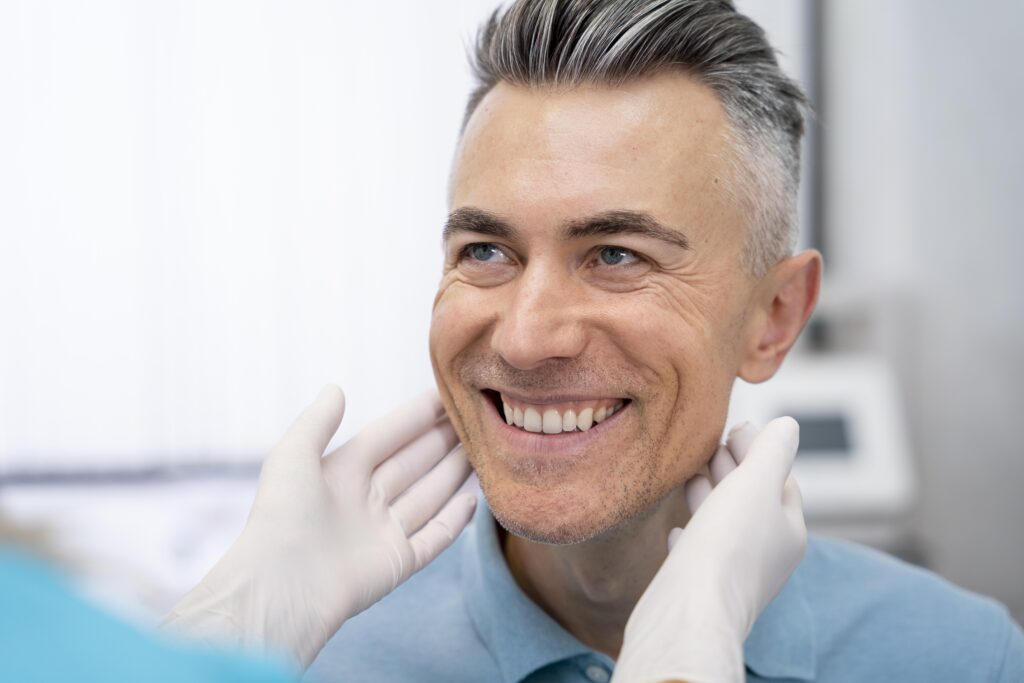
Tedaviler tamamlandıktan sonra, elde edilecek görünüm geçici restorasyonlar aracılığıyla hasta ile paylaşılır ve hastanın onayı alınır. Hastanın istediği ve diş hekiminin uygun gördüğü değişiklikler varsa, bunlar gerçekleştirilir ve hastanın onayıyla tedavi süreci başlatılır.
If the patient who will undergo the Hollywood smile procedure needs orthodontic treatment, this should be prioritized. If a level disorder is detected in the gums, these are eliminated. In patients with missing teeth, dental implants or other appropriate treatments are performed. After surgical procedures, teeth whitening treatment is applied after the healing processes are completed. Visual and stylistic defects in the teeth are eliminated. For this, procedures such as aesthetic composite filling, veneering, porcelain laminate and zirconium coating can be used.
The success of the Hollywood smile procedure is that the shape and contour of the lips are taken into consideration when planning dental and gum applications. In this way, it is possible to realize the most suitable design for each patient's face and get natural and aesthetically satisfying results.
Hollywood smile can be performed on people who are dissatisfied with the appearance of their teeth due to various reasons and who want their teeth and smile to have a more aesthetic appearance. In this context, changes can be made in the color, shape and surface structure of the teeth, giving both teeth and gums a healthy and aesthetically better appearance.
The main ailments that can be eliminated with Hollywood smile application, which aims to improve the appearance of the person's teeth, can be listed as follows:
Hollywood smile smile design includes various dentistry procedures to achieve an aesthetic smile that the patient wants and is compatible with facial features. These procedures are customized depending on the person's current dental condition. In general, some common procedures used in Hollywood smile smile design can be listed as follows:
How long it takes for Hollywood smile applications may vary for each patient depending on the current condition of the teeth, the desired results, the treatments to be applied and the patient's recovery rate. Since the total time needed for Hollywood smile application can vary depending on the patient's treatment needs and the treatment methods chosen, in some cases Hollywood smile application can be completed in a few days and in some cases in a few weeks.
Although oral and dental care is a routine that prevents problems such as toothache, bad breath and tooth loss for most people, the interest in smile design procedures that prioritize the gums as much as the teeth is increasing day by day. Men and women of different ages may be unhappy with their smiles due to tooth decay, crooked tooth alignment, dental impact diseases, tooth loss or tooth discoloration. If they have healthy teeth and gums, they may also experience problems such as tooth and gum disproportion or deformity.
The Hollywood smile procedure, which comes into play at this stage, helps each individual to have more beautiful and healthy smiles. Thanks to the treatments planned and applied specifically for each patient, natural and aesthetically satisfying results can be achieved.
Hollywood smile application offers the opportunity to have more aesthetically attractive smiles by improving the color, shape and arrangement of the teeth. The white, regular and attractive appearance of the teeth can become an element that increases the self-confidence of the person. Achieving aesthetically impressive results can also make a person feel more comfortable in social relationships.
In addition, Hollywood smile application can help to reflect a more professional appearance in the business world or social circles by improving the overall image of the person. Thanks to Hollywood smile, which corrects discoloration and staining, cracks, fractures, gaps between teeth and other aesthetic problems, teeth look healthier.
After Hollywood smile applications, oral and dental care routine should be performed correctly and regularly. However, it is important not to use toothpastes that have abrasive properties on the teeth and to change the wrong brushing habits. Failure to pay attention to these factors can lead to scratches on the surface of the teeth. As part of the oral and dental care routine, it is necessary to brush the teeth 2 to 3 times a day with non-abrasive fluoride toothpastes.
The use of dental floss should be included in the oral and dental care routine in order to maintain the effect of the treatments applied within the scope of Hollywood smile for a long time, to clean the plaque remaining on the teeth and to prevent tooth decay. Alcohol-free mouthwashes should be used to ensure oral hygiene, and foods and drinks with high sugar content should not be consumed. Also, care should be taken not to bite and chew hard objects.

Hollywood gülüşü terimi genellikle estetik diş hekimliği uygulamalarını ifade eder ve kişinin gülüşünü estetik olarak iyileştirmeyi amaçlar. Hollywood gülüşü türleri, kişinin tercihlerine, diş yapısına ve estetik hedeflerine bağlı olarak değişiklik gösterebilir.
Hollywood smile prices may vary depending on the treatments to be applied on a patient-specific basis. The expertise and experience of the dentist, the materials and technologies used in the treatments, and the scope of the treatments applied are directly effective factors on Hollywood smile prices.
Achieving a Hollywood smile in Turkey is a transformative process, combining advanced dental treatments with the expertise of skilled professionals at an affordable cost. Here's a step-by-step guide to help you navigate your journey:
1. Research and Choose a Dental Clinic
The first step is to research various dental clinics in Turkey. Explore their services, read patient reviews, and compare the quality of treatments they offer. Look for clinics with advanced technology and experienced dental teams. Many top clinics, such as MosDent Dental Hospital, provide comprehensive information about their services and a track record of successful smile transformations.
2. Schedule a Consultation
Once you've chosen a clinic, schedule an initial consultation. This meeting allows you to discuss your aesthetic goals, ask questions, and receive a thorough examination of your teeth, gums, and overall oral health. The dentist will assess your smile and listen to your desires for your Hollywood smile makeover.
3. Receive a Personalized Treatment Plan
After the consultation, the dentist will create a customized treatment plan based on your dental needs and aesthetic preferences. This plan may include:
- Veneers: Thin porcelain or composite coverings that enhance the appearance of your teeth.
- Teeth Whitening: Brightening your smile with laser or home-whitening treatments.
- Crowns or Bridges: To restore damaged or missing teeth.
- Orthodontics: Correcting misaligned teeth using brackets or aligners, if necessary.
This step ensures your smile makeover is tailored to achieve the best and longest-lasting results.
4. Undergo the Procedures
Once the treatment plan is agreed upon, you will proceed with the dental procedures. Using state-of-the-art equipment and advanced dental techniques, clinics like MosDent ensure a comfortable, relaxing experience. Depending on your plan, you may need multiple visits, but many treatments (such as veneers or teeth whitening) can be completed within a few sessions.
5. Post-Treatment Care
After completing the procedures, post-care is essential to maintain the results. You'll receive instructions on how to care for your new smile, which includes:
- Brushing and flossing regularly.
- Avoiding certain foods or drinks that can stain your teeth.
- Scheduling follow-up appointments for professional cleaning and check-ups.
Turkey has emerged as a leading destination for cosmetic dental treatments, offering high-quality care at affordable prices. Here's why:
MosDent Dental Hospital is a top-tier clinic in Turkey, renowned for its patient-centred approach and high standards in cosmetic dentistry. Here's why MosDent is an exceptional choice for your Hollywood smile:
- Expert Team: MosDent's skilled dentists are experts in procedures like veneers, crowns, and teeth whitening, ensuring precise and high-quality results.
- Personalized Care: The clinic provides tailored treatment plans based on each patient's unique dental needs and goals, ensuring the best outcomes.
- Affordability: MosDent offers competitive pricing, allowing you to achieve your dream smile at a fraction of the cost of Europe or North America.
- Comfort and Safety: The clinic emphasizes patient comfort, hygiene, and safety, adhering to international standards.
- Modern Amenities: MosDent uses cutting-edge technology to ensure quick and effective treatments, making the entire experience smooth and efficient.
Choosing MosDent Dental Hospital guarantees expertise, comfort, and beautiful results for your Hollywood smile in Turkey.
By following these steps, you can confidently achieve your dream smile in Turkey, enjoying dental expertise and the country's cultural beauty during your stay.
Sedation is an anesthesia method used to eliminate pain, anxiety and fear that may occur during dental treatments. With the effect of sedative drugs that provide comfort and forgetfulness, the patient who is in a state of drowsiness or half-unconsciousness does not remember the content of the procedure, pain perception decreases, and unwanted intraoral reflexes are prevented. After the treatment, it eliminates the fear of the dentist and makes it easier for the patient to come to the dental treatment in the next session.
It can be performed by sniffing sedative anesthetic gas with drugs that can be applied intravenously, orally, rectally. It does not carry the risks of general anesthesia, recovery after the procedure is quick and comfortable.
It is an extremely safe anesthesia method that can be easily applied to children, adults and disabled patients who are afraid of dentists or needles, who cannot have dental treatments due to nausea, vomiting, gag reflex.
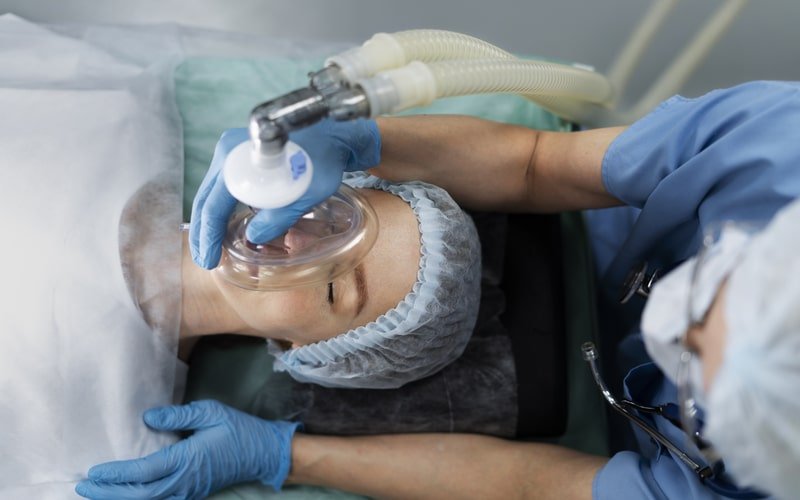
General anesthesia is the patient's being fully anesthetized and connected to the anesthesia device during the procedure under the influence of the medications given in the operating room environment and under the control of the anesthesiologist. A nasal or oral breathing tube is attached to the patient and connected to the anesthesia device. The device breathes oxygen and narcosis gas to the patient in a certain mixture until the procedure is completed. During the procedure, all vital functions of the patient are monitored instantly. In general anesthesia, there is a complete loss of consciousness, the patient in a deep sleep state does not see or hear anything, the sense of pain is completely eliminated. At the end of the procedure, the patient is awakened by appropriate methods.
General anesthesia is used for mentally handicapped individuals with communication difficulties, in surgical interventions requiring long procedure time where local anesthesia and sedation will be insufficient.
General anesthesia requires preparation before the procedure. According to the condition of the patient who is examined by the anesthesiologist, necessary tests such as ECG, lung x-ray, blood tests may be requested. Before the procedure, hunger and thirst for a certain period of time are required in adult and pediatric patients.
During sedation and general anesthesia, drug-related side effects, allergic reactions, airway difficulties and traumas can be seen. These unwanted effects can be quickly and easily eliminated under the control of an experienced team of experts. Nowadays, complications related to anesthesia are very rare when performed under appropriate conditions.
Periodontology is the area of the specialized system of hard and soft tissues that support your teeth and keep them in their place in the jaw. This apparatus, known as the periodontium, has some very important functions: It securely attaches the teeth to the jaws.
It is the situation where the gum is pulled under the enamel layer, which is the protective layer of the tooth, and the root surfaces are exposed.
The surfaces of the teeth are not resistant to external factors. When gingival recession occurs, its roots are exposed. When gingival recession is not treated, sensitivity (leakage) and root caries may occur on the root surfaces over time and tooth can be lost.
Today, there are many treatments, both surgically and non-surgically, for gum recession. Surgically exposed root surfaces can be closed with microsurgical techniques and restored to their pre-extraction state or further recession of the gum can be prevented. Sutures are removed 10-14 days after the microsurgical procedure and the tissue is left to heal.

It is the case of bacterial plaque and tartar formed by the accumulation of food residues on the tooth and root surfaces, causing inflammation in the gums and causing bleeding and redness. Most of the time, these bacterial plaque and tartar are firmly adhered to the root surfaces of the teeth and cause the bone under the gum to dissolve due to inflammation. Swaying and abscess can occur in the teeth due to this bone resorption and teeth can be lost. When gum treatment is done, inflammation disappears and bone resorption stops.
Sometimes, gum surgery can be performed with microsurgical techniques and bone dust (graft) can be used to replace the lost bone.
In order to prevent the recurrence of gingivitis, teeth should be brushed as and often as recommended by the dentist and oral hygiene should be paid attention to.
Before all dental treatments such as implant treatment, crown, bridge, zirconium, filling and prosthesis, braces, gums should be checked, inflammation should be removed and then these procedures should be performed. Otherwise, severe gingivitis may occur in the future and the treatments performed fail.

Today, lasers are used in many areas in gum treatment. It is especially used to ensure the harmony of the gums called 'pink aesthetics' with the teeth, to eliminate gum growth and to increase the visibility of the teeth.
In addition, lasers can be used to eliminate gingivitis, accelerate wound healing and eliminate bacteria.
It is a department that aims to protect the milk and permanent teeth of children between the ages of 0-13 in a healthy way and to function, as well as to eliminate the problems caused by caries, physical trauma, hereditary and congenital factors.
Pedodontics is a comprehensive branch of dentistry that includes all treatments in dentistry and performs them in accordance with children and young people.
Pedodontist (Pediatric Dentist is a dentist who continued his education in the Department of Pedodontics after he graduated from the Faculty of Dentistry.
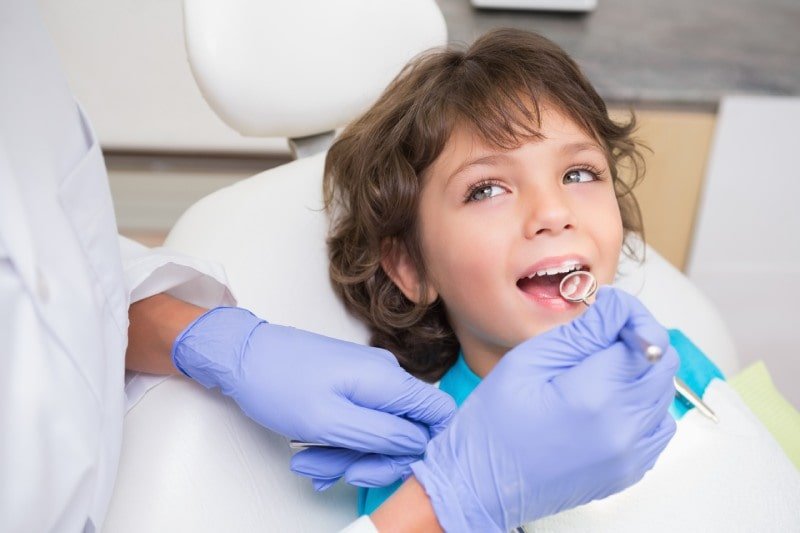
Pedodontists can apply all treatments and preventive applications in dentistry in a special way to the child patient:
Approaches with the most appropriate examination and treatment techniques for children. In this way, children do not fear a dentist.
Determines the caries risk group and makes protective-preventive applications (such as fissure sealant, local fluoride application).
It monitors jaw development and teething during growth and development, and possible tooth crowding is prevented with protective orthodontic treatments.
In cases where permanent teeth are missing, it improves the aesthetic appearance and chewing by making dentures.
Makes dental treatment of children who need special care.
Unlike adulthood, childhood period has features such as rapid metabolism and rapid growth and development. Similarly, the structure of deciduous teeth and newly erupting young permanent teeth is quite different from that of an adult tooth. For this reason, pedodontists are dentists with the most comprehensive knowledge of children's oral health.

It is recommended to have the first dental examination after the eruption of the first tooth (6 months-1 age). With early dental examination, correct oral hygiene training is given, nutrition regulation is made, and information is given about what should be considered to prevent caries. In this way, tooth decays are prevented while still in infancy. With regular dental checks at the interval determined by your pedodontist, the foundations of decay-free and healthy teeth are laid in the long term.
Orthodontics can be defined as a specialized field of dentistry that aims to correct misplaced teeth and jaws. General dentistry procedures mainly focus on tooth decay and misalignment. Orthodontics, on the other hand, targets problems such as misalignment of the jaw and crooked teeth and supports the achievement of a healthy tooth structure. However, orthodontics is not only concerned with providing straight and beautiful teeth and smiles. Various orthodontic problems that cause tooth decay and tooth loss are also within the scope of orthodontics. In this way, patients can have healthy teeth and gums.
Orthodontics helps to correct problems with how teeth and jaws are aligned and undertakes the diagnosis and treatment of misaligned teeth and jaws.
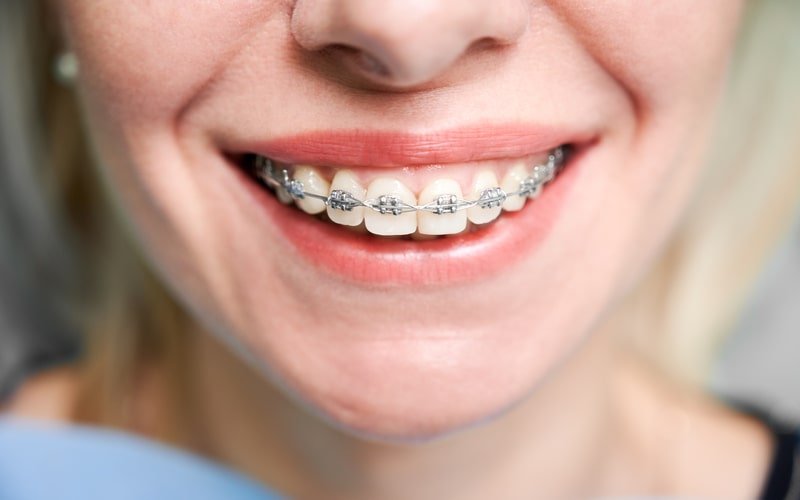
Orthodontics treats malocclusion, incorrect tooth and jaw positions. The diseases that orthodontics deals with include crooked, crowded and protruding teeth and biting difficulties. As a result of the application of orthodontic treatment designed to suit the needs of the patient, patients can achieve a beautiful smile, long-term health and comfort that will increase their self-confidence.
Orthodontic problems can affect both children and adults. Even those who wore braces in their youth can experience orthodontic problems. This is because teeth are mobile and continue to move very slowly in response to normal biting and chewing forces. However, if young children develop bad habits such as thumb sucking or tongue thrusting, the teeth can be pushed out of their proper alignment. This and various other orthodontic problems are usually seen around the age of 7 when the permanent teeth begin to erupt.
The way the teeth come together and align is called "occlusion". Under normal circumstances, when the upper jaw is closed, the upper teeth should rest on the lower teeth and the upper surfaces of the molars should be aligned. This may not happen for various reasons and dental malocclusion can cause serious oral health complications. Orthodontic treatment may be considered at this stage.
Orthodontics is the field of dentistry that deals with malocclusions in which the proper biting function cannot be performed due to misalignment of the teeth. Within the scope of orthodontics, treatments can be performed to improve both oral health and cosmetic appearance. People with curvature, distortion and structural disorders in the teeth and mouth structure are considered to be suitable candidates for orthodontic treatment.
Orthodontic treatment can be applied to patients of all age groups, in other words, orthodontic treatment has no age limit. Because it is possible to move healthy teeth in the mouth of patients at any age. However, orthodontic treatment can also be used to help prosthesis applications in adults.
In case of orthodontic treatment, the problem and the suitability of the treatment are evaluated for each patient. The treatment plan is determined according to factors such as the patient's age, lifestyle habits, type and degree of the problem to be treated.
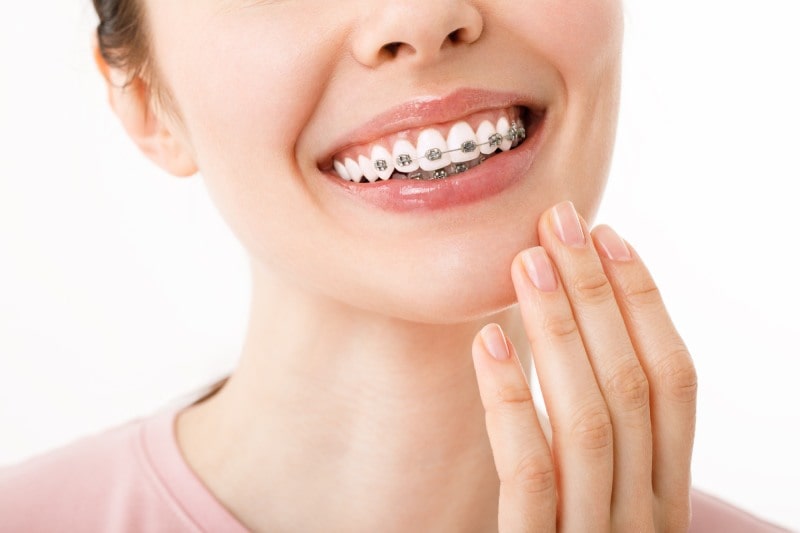
Orthodontic treatment is completed within an average period of 6 months to 2 years. This period may vary depending on patient-specific needs, the scope of the treatment to be applied, the patient's oral and dental structure and the duration of response to the treatment.
Orthodontic treatment can be applied to patients with crowding, crowding, separation or jaw problems. In this context, it can be applied to people who feel uncomfortable with the appearance of their teeth. When your milk teeth fall out, permanent teeth begin to erupt. It is extremely important to have the permanent teeth checked regularly and to apply treatment to the detected orthodontic problems. Within the scope of orthodontic treatment; metal and transparent braces, intraoral and extraoral appliances, aligners and surgical interventions may be used.
Patients undergoing orthodontic treatment are first subjected to a detailed examination and different tests are applied. After the examination performed by the dentist, facial and dental photographs of the patient are taken with the help of cephalometric and panoramic radiographs, and the diagnosis is made. The patient is informed about the braces treatment to be applied. In addition, the wires and treatment methods to be used within the scope of treatment are explained. Bracket and plate design is made. A personalized treatment plan is determined by evaluating intraoral photographs and films.
After the treatment plan is determined, if there are treatments such as filling, tooth extraction, implant treatment and scaling, which are needed for the patient to achieve ideal oral health, these are applied first. If there is gum disease, this should also be treated.
The choice of braces is made in accordance with the patient's mouth and dentition. When braces are first worn, it is usual to experience an adjustment period for 3 to 4 days. After this period, the mouth and teeth get used to the braces. In addition, it is possible to get fast and effective results from orthodontic treatment if the right braces are treated specifically for the patient.
After the braces and brackets are selected, an appliance called "retractor" is attached to the edge of the patient's lips. In this way, the inside of the mouth is expanded and the procedure begins. While the patient is being braced, the dentist can easily see the teeth in the anterior and posterior regions thanks to the retractor. The teeth must be dry when the braces are placed. After the teeth are acidified and dried, it is possible to apply the brackets by two methods. These methods are traditional and bonding methods.
In traditional orthodontic treatment, brackets are placed one by one on the teeth using a special adhesive. After the brackets are radiation hardened, the surrounding area is cleaned and a wire called "archwire" is passed through the brackets. If necessary, the brackets are fixed using a tire.
Bonding method is a method that has been frequently used in recent years. In this method, measurements are taken from the patient's mouth and a tooth model is prepared. Brackets are glued on this model. Then they are transferred onto the teeth and hardened with radiation. One of the most important features of the bonding method is the reduction in the time the patient spends in the dentist's chair.
Braces treatment is an effective process that helps to position the teeth properly. However, it is also extremely important to maintain the permanence of the results provided by orthodontic treatment. For this, after the active treatment is completed, reinforcement treatment is applied and the patient's teeth are prevented from returning to their old position.
Within the scope of reinforcement treatment, it may be preferred to use fixed or removable appliances. The removable appliance applied to the upper jaw is called "Hawley". "Essix", on the other hand, is a removable appliance that cannot be easily recognized. Fixed reinforcement appliances are generally used to prevent the movement of the teeth after the braces are removed by adhering to the tongue-facing levels of the teeth in the lower anterior region.
Orthodontic treatment prices may vary depending on factors such as the degree of difficulty of the treatment and how crooked the person's teeth are. Although some disorders are considered minor by the patient, it may take a long time to correct them because they are actually skeletal. For this reason, orthodontic treatment prices may vary according to the scope of the patient-specific treatment.
Turkey has become a top destination for orthodontic treatment, offering a compelling mix of affordability, quality, and cultural appeal. Here are several reasons why patients from around the world are choosing Turkey for their orthodontic needs:
MosDent Dental Hospital is an excellent choice for orthodontic treatment in Turkey, offering patients a perfect blend of expertise, technology, and comfort. Here's why MosDent is a top pick:
Choosing MosDent Dental Hospital for your orthodontic treatment means enhancing your dental health and enjoying a personalized and comfortable experience in one of Turkey's premier dental facilities.
Our guide on dental implants offers top-notch tooth replacement solutions. Experience expert care and advanced technology for your dental transformation.
If you find yourself missing one or more teeth, dental implants might be the solution you've been searching for. Considered the most popular option for tooth replacement, dental implants provide patients with a natural-looking and functioning set of teeth. Dental implants behave just like real teeth, allowing you to enjoy full chewing power and the ability to eat, brush, and floss normally.
Unlike traditional dentures or dental bridges, dental implants are surgically placed into the jawbone, mimicking the role of natural tooth roots. This not only gives the dental implants superior stability, but it also promotes bone growth around the implant, preventing bone loss and preserving facial structure.
Dental implant placement is a well-established and highly successful procedure that has transformed the lives of countless individuals. With proper care and regular dental visits, dental implants can last a lifetime, making them a long-term investment in your oral health and overall well-being.
Regain your confidence and enjoy the benefits of a complete smile with dental implants. Discover the power of dental implants to restore your oral health and give you back the functionality of your natural teeth.
The All-on-Four or All-on-Six dental implant technique is a comprehensive solution for individuals who are missing all or most of their teeth. This technique involves placing four dental implants in the jawbone, which act as anchors for a full arch of replacement teeth. This procedure offers a fixed and permanent solution that restores both function and aesthetics. It eliminates the need for traditional dentures, providing patients with a stable and natural-looking smile.
Same day dental implants are a convenient and time-saving option for individuals who want to replace a single tooth or multiple teeth in a short period. With this type of dental implant, the implant placement and restoration can be completed in a single visit to the dentist. The process involves immediate implant placement and the attachment of a temporary crown or bridge on the same day. Same day dental implants offer immediate results, allowing patients to regain their smile and functionality without the wait.
Single tooth dental implants are an excellent option for individuals who have lost a single tooth due to injury, decay, or other reasons. This type of dental implant involves the placement of an implant post into the jawbone, which acts as a replacement for the missing tooth root. Once the implant integrates with the bone, a custom-made dental crown is attached to the implant, providing a durable and natural-looking replacement tooth. Single tooth dental implants offer a long-term solution that preserves the surrounding teeth and restores the aesthetics and function of a complete smile.
Multiple teeth dental implants are a suitable choice for individuals who have lost several adjacent teeth or multiple teeth in different areas of the mouth. This type of dental implant involves the placement of two or more implants in the jawbone, depending on the number of missing teeth. Once the implants have integrated with the bone, a custom-made bridge or implant-supported denture is attached to the implants, providing a stable and functional replacement for multiple missing teeth. Multiple teeth dental implants offer a reliable and long-lasting solution that restores the ability to eat, speak, and smile with confidence.
Full mouth dental implants, also known as full arch dental implants or implant-supported dentures, are the ideal option for individuals who have lost all or most of their teeth. This comprehensive dental implant type involves the placement of multiple implants throughout the jawbone to support a full set of replacement teeth. The number of implants required may vary depending on individual needs and bone density. Full mouth dental implants provide a permanent and stable solution that mimics the look and function of natural teeth. They restore the ability to eat a wide variety of foods, speak clearly, and regain confidence in one's smile.
Dental implants are a popular solution for replacing missing teeth. They offer a range of benefits, including improved functionality, aesthetics, and oral health. However, determining if dental implants are the right choice for you depends on several factors.
One key consideration is bone density. To successfully support dental implants, there must be enough healthy bone in the jaw. If bone loss has occurred, additional procedures such as bone grafting may be required before implant placement.
Your overall health is also important. Certain health conditions, such as uncontrolled diabetes, may affect the success of the dental implant procedure. Your dentist will assess your medical history to determine if dental implants are suitable for you.
Lifestyle habits, such as smoking, can also impact the longevity of dental implants. Studies have shown that smokers have a higher risk of implant failure.
Additionally, your commitment to oral hygiene and regular dental care plays a significant role in the success of dental implants. Good oral hygiene practices and regular dental visits are crucial to prevent complications and maintain the health of your implants.
In conclusion, dental implants offer a durable and natural-looking solution for replacing missing teeth. However, several factors, including bone density, overall health, and lifestyle habits, are essential in determining if dental implants are right for you. Consult with your dentist to discuss your suitability for this treatment option.
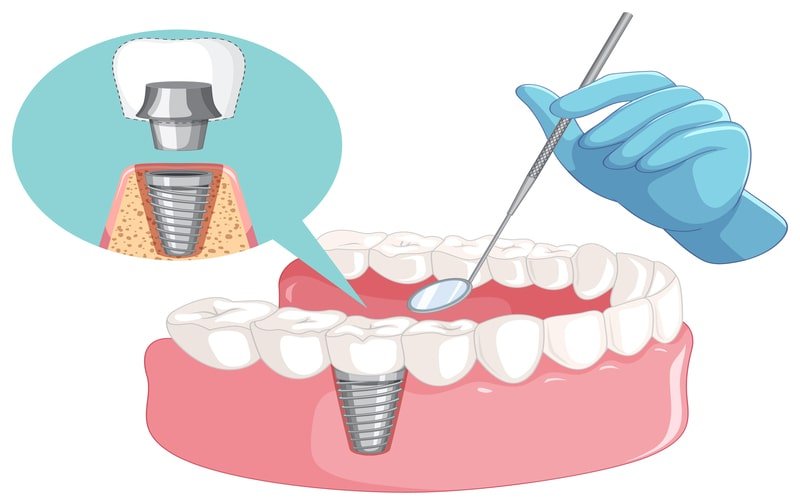
Dental implants are a revolutionary tooth replacement option that offers numerous benefits. One of the key advantages of dental implants is that they closely replicate the look and feel of natural teeth. With dental implants, it becomes difficult to distinguish them from real teeth, giving you a natural and beautiful smile.
Moreover, dental implants improve chewing ability, allowing you to enjoy your favorite foods without restriction. With enhanced chewing ability, you can properly digest your food, leading to better nutrition and overall health.
Another significant benefit of dental implants is that they help prevent facial bone loss. When a tooth is missing, the jaw bone starts to deteriorate over time. Dental implants act as replacement tooth roots, stimulating the jaw bone and preventing bone loss.
Apart from these functional benefits, dental implants also provide a boost in self-confidence. With a complete and natural-looking smile, you can feel more confident in social and professional settings, enhancing your quality of life.
Overall, dental implants offer a host of advantages that make them a preferred tooth replacement option. They closely resemble natural teeth, improve chewing ability, promote better nutrition and health, prevent facial bone loss, and boost self-confidence. If you are considering tooth replacement, dental implants are worth exploring for their remarkable benefits.
Getting dental implants is a multi-step process that involves careful assessment, coordination with a prosthodontist, and an outpatient surgery performed under local or general anesthesia.
The first step in the dental implant procedure is an initial assessment, which includes a 3D x-ray scan known as a Cone Beam Computed Tomography (CBCT). This scan provides detailed images of the jawbone, allowing the dentist to determine the optimal placement for the implants.
Once the assessment is completed, the dentist will coordinate with a prosthodontist, who specializes in the restoration and replacement of teeth. Together, they will create a treatment plan tailored to the patient's specific needs and oral health.
The surgery for dental implants is typically performed under local anesthesia, however when needed can be performed under general anesthesia as well while the patient is asleep throughout the operation. At MosDent we have a fully equipped operating room and an experienced anesthesiologist with her team to assist the dental team during the surgery.
During the surgery, titanium implant posts are surgically placed into the jawbone to serve as artificial tooth roots. After the surgery, a temporary denture may be screwed into the implants to provide functional teeth while the patient's jawbone heals.
Overall, the process of getting dental implants involves a thorough assessment, coordination with a prosthodontist, and an outpatient surgery performed under appropriate anesthesia. This comprehensive approach ensures the success of the dental implant procedure and helps restore a patient's smile and oral functionality.
Dental implants offer a long-lasting and natural-looking solution to missing teeth. However, they require proper care to maintain their health and functionality. Taking care of dental implants is similar to caring for natural teeth.
It is essential to brush your dental implants twice a day using a soft-bristle toothbrush and fluoride toothpaste. Pay attention to the gumline and all sides of the implant to ensure thorough cleaning. Flossing is also crucial to remove plaque and debris from between the dental implants and adjacent teeth. Use a floss threader or interdental brush specifically designed for dental implants.
In addition to regular oral hygiene habits, rinsing with an antibacterial mouthwash helps minimize bacteria in the mouth and reduce the risk of infection around the implants. It is essential to attend regular dental check-ups and cleanings to monitor the condition of the implants and ensure proper oral hygiene.
By maintaining good oral hygiene, you can improve the durability and effectiveness of your dental implants. With proper care, dental implants can closely resemble natural teeth in how they look, feel, and function, allowing you to have a healthy and confident smile for a long time.

Dental implants are a popular and effective solution for replacing missing teeth. However, there are several common myths surrounding this treatment that often deter people from considering it. Let's debunk these myths and provide factual information to help you make a well-informed decision.
While dental implants may seem more costly upfront compared to traditional dentures or dental bridges, they are a long-term investment in your oral health. Unlike removable dentures, dental implants are a permanent solution that can last a lifetime with proper care. Also, dental implants are often cheaper in Turkey for several reasons. Firstly, the cost of living in Turkey is generally lower compared to many other countries, resulting in lower operating costs for dental clinics. This allows them to offer more competitive prices for dental procedures, including dental implants. Additionally, Turkey has a flourishing medical tourism industry, with many individuals from around the world traveling to the country for affordable and high-quality healthcare services. This increased demand for dental implants has led to a greater number of clinics specializing in this procedure, creating competition among providers and driving down prices. Furthermore, Turkey has invested significantly in its healthcare infrastructure, with state-of-the-art facilities and highly skilled dental professionals. This combination of lower operating costs, a competitive market, and advanced healthcare infrastructure makes dental implants more affordable in Turkey compared to many other countries.
Unlike dental bridges, dental implants do not rely on adjacent teeth for support. They are independent and stand alone. The implant is fused directly into the jawbone, which stimulates bone growth and prevents bone loss in the long run.
Dental implant procedures have a high success rate, typically ranging from 95% to 98%. They have been extensively researched and tested, making them a reliable and predictable treatment option for tooth replacement. It is also worth mentioning that the expertise of the implantologist and the quality of materials used contributes to the success rate of the dental implants.
In conclusion, they offer numerous benefits and are a successful and predictable solution for missing teeth. They are a long-lasting option that restores oral function and enhances your overall oral health. Don't let these common myths discourage you from considering dental implants as a tooth replacement option. Consult one of our oral surgeons or implantologists to learn more about this transformative treatment.
When considering options for replacing missing teeth, dental implants are often considered the most effective solution. However, there are alternative options available for individuals who may not be suitable candidates for dental implants or prefer other methods. Two commonly used alternatives to dental implants are traditional dentures and dental bridges.
Traditional dentures are removable prosthetic devices used to replace missing teeth. They consist of artificial teeth attached to a pink acrylic base that resembles gum tissue. Dentures are a popular choice due to their affordability and non-invasive nature. However, they can be prone to slipping or shifting, causing discomfort and affecting speech or eating habits. Additionally, regular maintenance and cleansing are necessary to ensure oral hygiene.
Dental bridges, on the other hand, are fixed appliances that are used to "bridge" the gap created by missing teeth. Supported by adjacent teeth, dental bridges are more stable than dentures. They offer natural-looking results and restore functionality to a certain extent. However, dental bridges require healthy adjacent teeth to support the bridge, and they may also necessitate alteration or removal of enamel from these teeth.
Dental implants are an excellent tooth replacement option that offers not only the look and function of natural teeth but also long-term oral health benefits. However, it's important to understand the associated costs and available financing options.
The average cost of dental implants can vary depending on several factors, typically ranging from $300 to $1,100 per tooth. However, this is just an estimate as additional procedures such as a sinus lift or bone grafting may be necessary, which can contribute to the overall cost. These procedures help ensure the implant's stability and success in cases where there is insufficient bone or the sinuses are positioned too close to the jawbone.
It's essential to note that dental implants are generally not covered by insurance and are considered an out-of-pocket expense. Although dental insurance coverage varies, most dental insurance providers do not provide substantial coverage for the implant procedure. This is due to the perception that implants are a cosmetic procedure and not an essential health requirement.
While the cost of dental implants may seem high initially, they provide long-term value by preserving adjacent teeth, preventing bone loss, and maintaining oral health.
Dental implants are commonly chosen as an effective solution for individuals with missing teeth, as they provide various advantages such as improved oral health, enhanced speech, and increased self-confidence. However, it is important to understand that dental implants may not be suitable for everyone, and there are potential drawbacks and complications associated with the procedure.
One of the main factors that determine the suitability of dental implants is the individual's oral health condition. For successful implant placement, patients must have healthy gums and sufficient jaw bone to support the implant. Those with gum disease or inadequate bone density may require additional treatments or procedures prior to implant placement.
Complications can also arise during the dental implant process. In rare cases, the implant may fail to integrate with the jaw bone, resulting in its removal. However, in such cases we provide the re-implantation free-of-charge.
While dental implants offer a long-term and durable solution for tooth replacement, it is crucial to consult with a qualified professional to evaluate your suitability for the procedure and fully understand any potential drawbacks or complications.
Our dental practice is the right choice for dental implant treatments for several reasons. Firstly, we have a team of highly skilled and experienced dental professionals who specialize in implant dentistry. They have undergone extensive training and have a wealth of knowledge in the latest implant techniques and technologies. This ensures that our patients receive the highest quality of care and achieve successful outcomes.
Secondly, we prioritize patient comfort and satisfaction. We understand that undergoing dental implant treatments can be a significant decision, and we strive to create a welcoming and supportive environment for our patients. From the moment they walk through our doors, they will be greeted by our friendly staff who are dedicated to providing personalized care and addressing any concerns or questions they may have.
Additionally, we utilize state-of-the-art equipment and advanced dental technologies to enhance the precision and effectiveness of our dental implant procedures. Our clinic stays abreast of the latest advancements in implant dentistry to ensure that our patients receive the most innovative and cutting-edge treatments available.
Furthermore, we take a comprehensive approach to dental implant treatments. We conduct thorough examinations and evaluations to determine the most suitable treatment plan for each individual patient. Our team takes into consideration factors such as bone density, oral health, and overall well-being to ensure the long-term success and durability of the dental implants.
Furthermore, each implant patient is being examined by our periodontology specialists to evaluate the condition of their gingival tissue and bone health during the treatment process.
Ultimately, our team of dental professionals is committed to providing superior care and creating healthy and beautiful smiles for our patients.
